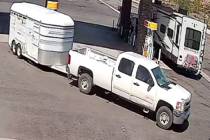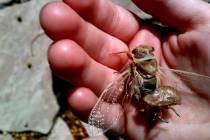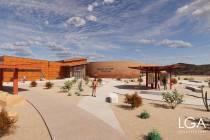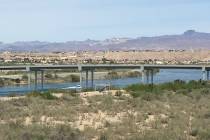‘Good progress’ in cattle roundup to decelerate
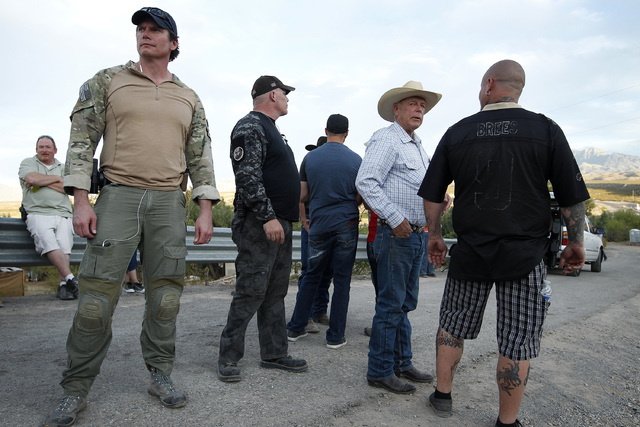
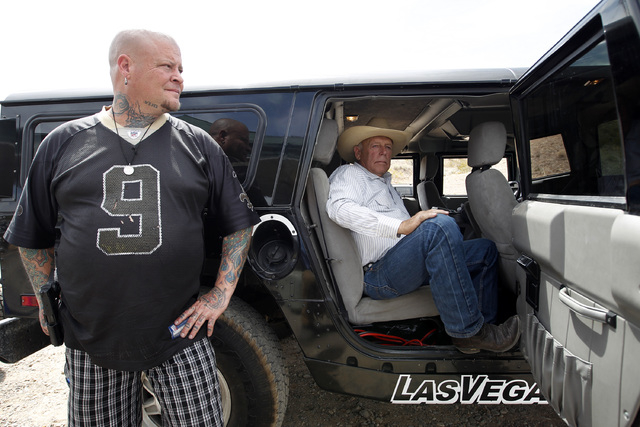
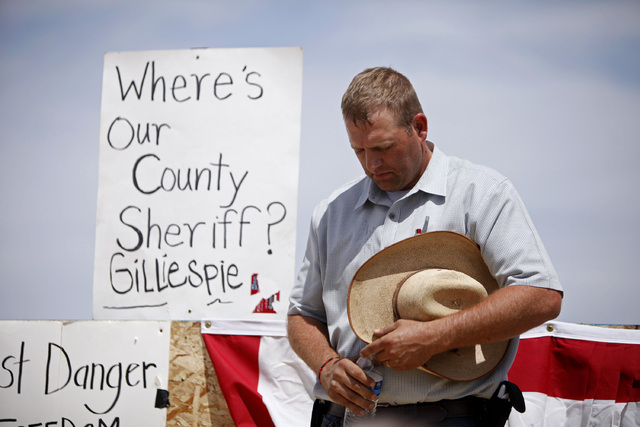
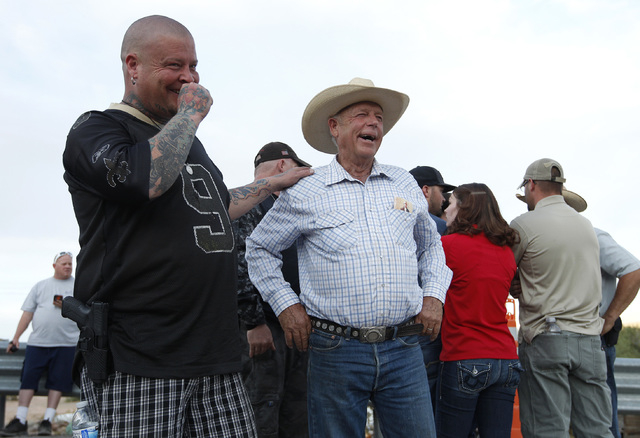
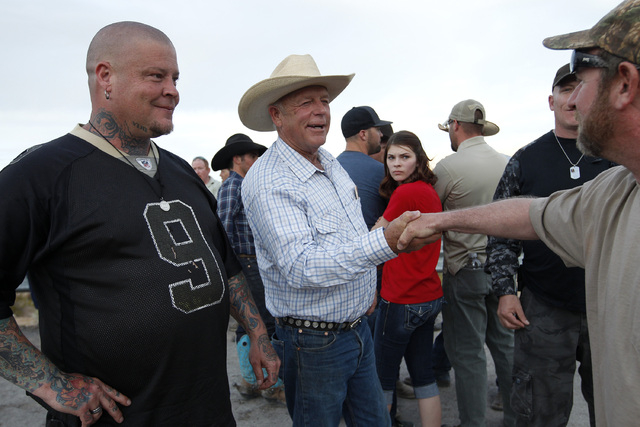
The federal roundup of Cliven Bundy’s cattle in northeastern Clark County was expected to take up to a month.
In the first seven days, contract cowboys collected almost 400 animals, more than two-fifths of Bundy’s herd.
But while federal officials believe they have made “good progress” so far, they also agree with the embattled rancher and his family about one thing, if nothing else: Bringing in the rest of the cattle won’t be quite so easy.
Early this month, just before the roundup got underway, a survey conducted by helicopter counted 908 head of cattle scattered across roughly 1,200 square miles of remote mountains and desert managed by the Bureau of Land Management and the National Park Service.
That’s an even larger area than the roughly 900 square miles of public land that have been closed to the public for the duration of the roundup, and roads out there are few and far between.
As one BLM official put it, “We don’t expect the same number of cattle to come in every day.”
Already, the capture rate seems to be slowing down. On Monday, 100 animals were collected. By Thursday, that number dropped to 25.
Meanwhile, pressure is mounting to wrap up the operation as quickly as possible.
On Wednesday, demonstrators and BLM rangers clashed as trucks involved in the roundup tried to turn off the main road leading past Bundy’s ranch. Now outside groups are joining the fray, including some armed militia members sympathetic to Bundy’s cause.
Security on the government’s side has been tight from the start, especially right around the contractors and federal employees who are conducting the roundup. One official suggested earlier in the week that the law enforcement presence would continue to grow as the number of threats do.
“Unfortunately, the more threats there are, the more this is going to cost the taxpayers,” said the official who asked not to be named because of safety concerns.
The BLM and Park Service have not released any cost projections for the operation, but almost $1 million will be paid to a Utah-based livestock contractor hired to collect Bundy’s cattle.
Earlier in the week, officials said a report with cost figures would be released at the operation’s halfway point. But on Thursday, state BLM director Amy Lueders said a full accounting will not be done until the roundup is over.
“We’re not providing estimates at this time,” she said.
According to state brand inspectors, almost 90 percent of the cattle rounded up by midweek bore Bundy’s brand. Of the remaining animals, five belonged to a neighboring rancher, four were marked with brands that couldn’t be read, and the rest were “slicks,” a ranching term for unmarked livestock.
The animals are being herded into temporary corrals by helicopters and contractors on horseback or lured in with food. From there, they are loaded into cattle trucks and delivered to holding pens at the government’s heavily guarded incident command center just off Interstate 15, a few miles southwest of Mesquite.
Stetsy Cox is the youngest of Bundy’s seven daughters. She helped organize the protest rally Monday near the family’s ranch, where she moved through the crowd in a pink cap, boots with spurs and a black T-shirt that read: “Guts. Glory. Bundy.”
She can also be seen in the YouTube video of Wednesday’s scuffle with BLM rangers. She’s the one who tells one of the officers that she’s pregnant and yells at him for threatening a woman with his police dog.
Cox said she is worried about the health of the cattle, especially in the midst of calving season as daytime temperatures climb into the 90s.
Her fear is that the animals will be driven too hard in the heat or that calves will be left behind to be eaten by coyotes or mountain lions. She also worries about cows getting hurt trying to escape their captors to get back to the newborns they left hiding in the dense underbrush.
But Cox said the timing of the operation is questionable for another reason: All those trucks and riders on horseback are pushing the cattle across the range just as federally protected desert tortoise are emerging from their winter sleep.
“If they’re so worried about the turtles, why are they out here now?”
Despite repeated requests, federal officials have not yet disclosed if any cattle have been injured or killed during the roundup so far.
All they have said is that the operation is being monitored by state brand inspectors and a veterinarian, and that there are protocols in place for deciding when animals should be euthanized. Lueders said cattle can be humanely killed if they are dangerously aggressive or hopelessly sick or injured.
Bundy stopped paying federal grazing fees in 1993 in a dispute with the BLM over range restrictions aimed at protecting the threatened desert tortoise. He spent the next 20 years ignoring or unsuccessfully challenging repeated orders for him to get his livestock off the range.
The federal government removed the first of Bundy’s cows from public land on April 5. No cattle are being impounded from Bundy’s private property, which totals about 160 acres along the Virgin River, 80 miles northeast of Las Vegas.
The rancher and his supporters like to characterize him as a folk hero, one man standing up for state sovereignty and against federal oppression. Others have called him a “welfare cowboy” who has spent decades operating a business on land he doesn’t own and getting something for free that other ranchers have to pay for.
The roundup goes on regardless.
Cox didn’t seem surprised by the number of cattle collected in the first few days of the operation. She said the crews seem to be going after the “gravy” first, namely those animals closest to roads and towns and more accustomed to human contact.
“These are the easy ones,” the 21-year-old said on Monday. “These cows along the river, we leave them. They come to the corral on their own.”
Cox expects the contract cowboys to be able use their helicopters to track down almost any cow out on the range. Collecting them all is a different story.
The real test will come in the backcountry, she said. Out there, the contractors will confront bulls that have been known to gore horses right out from under their riders, Cox said. The Bundy herd can be a wily bunch, even before you get a rope around them.
Contact Henry Brean at hbrean@reviewjournal.com or 702-383-0350. Find him on Twitter: @RefriedBrean.










